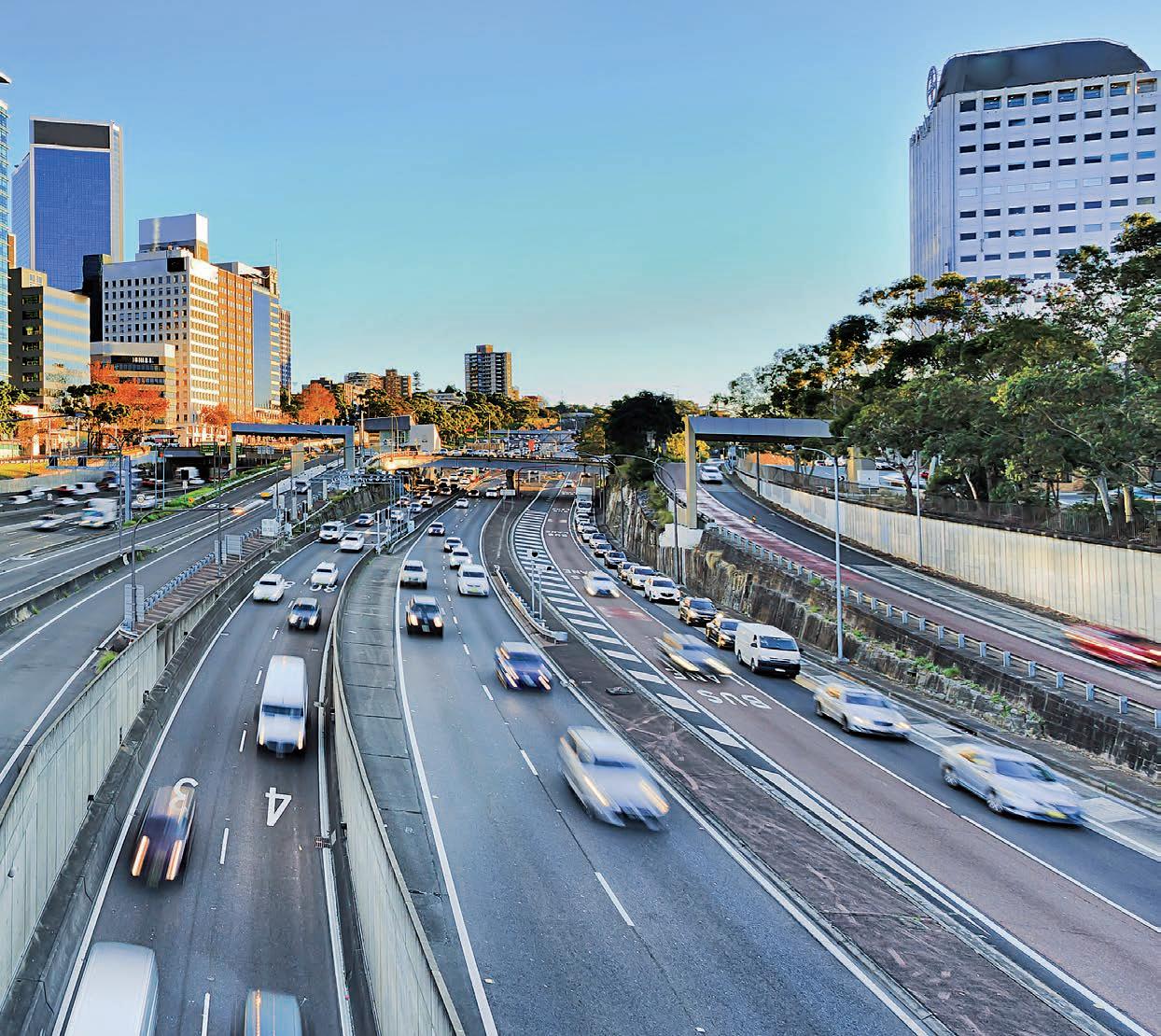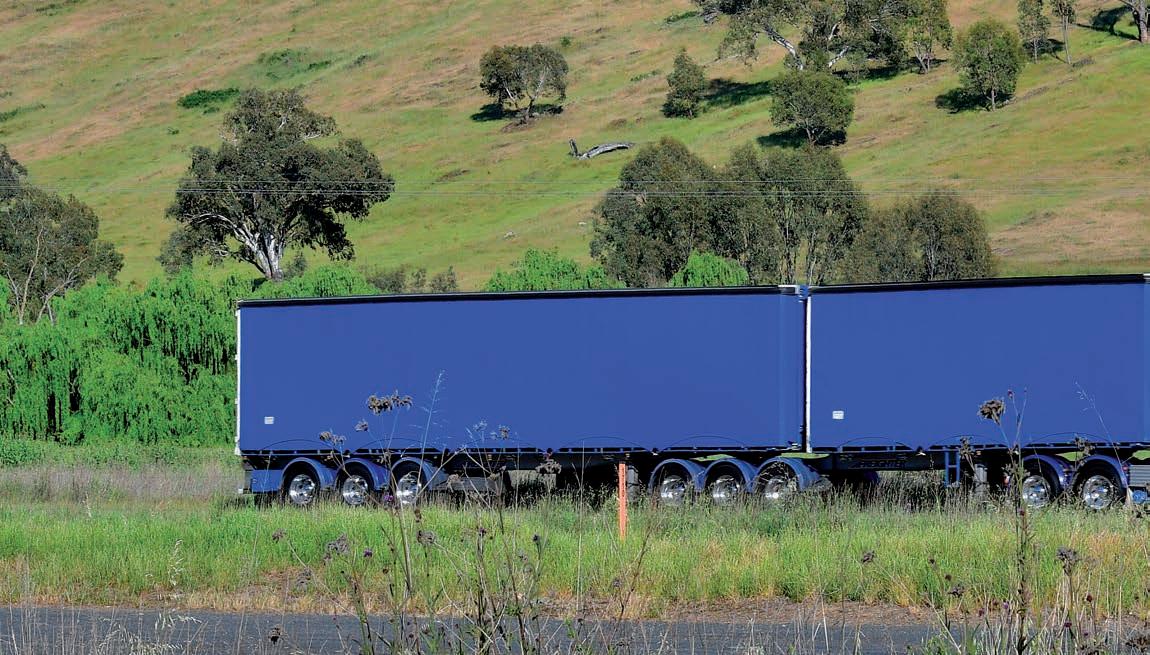
9 minute read
Special Report
by Prime Group
Federal Budget 2020-21 in review
RECORD ROAD SAFETY AND TRANSPORT INFRASTRUCTURE INVESTMENTS AND REVISED TAX RELIEF SCHEMES FOR BUSINESSES, AMONG OTHER IMPORTANT ALLOCATIONS, UNDERPIN AUSTRALIA’S ECONOMIC RECOVERY PLANS.
The Australian Government is investing $2 billion in the 2020-21 Budget towards road safety initiatives. Deputy Prime Minister and Minister for Infrastructure, Transport and Regional Development, Michael McCormack, said working towards zero fatalities and serious injuries on Australian roads was a core priority for the Government, which is why the Budget was funding this significant investment. “Road safety is everyone’s responsibility and the Government is playing our part by investing in road safety projects to get people where they need to be sooner and safer,” said McCormack. “We are committing an additional $2 billion over 18 months under a new Road Safety Program to deliver an estimated 3,000 kilometres of lifesaving road improvements and support thousands of jobs right across the country. “The program will deliver works such as new shoulder sealing, rumble strips to alert drivers they are moving out of their lane, median treatments to prevent head-on collisions and barriers to prevent run-offroad crashes and protect against roadside hazards. “The program will be delivered in three, six-month tranches and on a ‘use it or lose it’ basis. “Funds that States and Territories do not spend will be re-allocated to those that can, with jurisdictions required to provide road safety data as a key condition of funding. “We are ensuring this road-safety package can roll-out quickly, saving lives and reducing injuries,” he said. Assistant Minister for Road Safety and Freight Transport, Scott Buchholz, said road crashes cost the national economy about $30 billion a year and caused immeasurable suffering for affected families. “It is absolutely heartbreaking that every year around 1,200 people die on our roads and tens of thousands more are seriously injured,” said Buchholz. ”One death on our roads is one too many, and we are working closely with our state and territory colleagues to ensure the next
The Budget will support the transport industry and encourage strong economic recovery.

National Road Safety Strategy improves outcomes for all Australians. “To ensure our investments are driven by quality data and road safety improvements are accurately monitored and evaluated, we are also investing $5.5 million over four years to establish an Australian-first National Road Safety Data Hub. “The Data Hub will create the first nationally available road safety data collection to assess the effectiveness of road safety efforts by all Australian governments. “This will support our commitment to deliver the new National Road Safety Strategy and put Australia on a path to achieve zero fatalities and serious injuries by 2050,” he said. These additional investments build on the $500 million the Federal Government is already spending on Targeted Road Safety Works, boosting jobs and the economy while delivering life-saving upgrades in every single state and territory. In addition to its road safety commitments, the Morrison-McCormack Government has released more details on its record $110 billion transport infrastructure program and
$3.5 billion rolling water infrastructure fund. These investments, according to the Federal Government, will deliver an economic plan for a stronger, more resilient Australia that boosts the economy, provides water security for regional and rural Australia and meets the national freight challenge. Funding is being delivered to critical transport infrastructure projects in every state and territory, including: • an additional $490.6 million for the Coffs
Harbour Bypass in New South Wales; • $528 million for upgrades to the
Shepparton and Warrnambool rail lines in Victoria; • •$750 million for Stage 1 of the Coomera
Connector in Queensland; • an additional $80.0 million for the
Wheatbelt Secondary Freight Network in Western Australia; $136 million to progress the Main South Road Duplication in South Australia; $65 million for the Tasman Bridge Upgrade in Tasmania; $46.6 million for National Network Highway Upgrades in the Northern Territory; and $87.5 million for the Molonglo River Bridge in the Australian Capital Territory. McCormack and Minister for Population, Cities and Urban Infrastructure, Alan Tudge, said in a joint statement that the $110 billion 10-year infrastructure investment program will support Australia’s recovery, with projects currently under construction expected to support over 10,000 direct and indirect jobs over the life of the projects.
“This Budget provides the framework to deliver even greater benefits from these nation-defining investments. “We are building on our long-term commitment of $10 billion on the Bruce Highway in Queensland and we are also looking to the future with $20 million towards the Bruce Highway Upgrade Strategy to develop future investment priorities on this key Queensland corridor. We are continuing to ensure that our regional highways are efficient through a commitment of $560 million for the Singleton Bypass on the New England Highway in New South Wales, $100 million for access upgrades to the Strzelecki Track in South Australia, $16 million each for upgrades to the Goldfields Highway and the Broome-Cape Leveque Road in Western Australia and $120 million for upgrades to the Carpentaria Highway in the Northern Territory. “Our infrastructure pipeline isn’t just driving road investment, our commitment to substantial rail investment is full steam ahead, unlocking the economic potential of our regions. “We are investing in the transformational Melbourne to Brisbane Inland Rail project, delivering enhancements across the original program to connect regional Australia to cities and markets and establish a corridorof-commerce for generations to come.” Treasurer, Josh Frydenberg, has also outlined tax relief for business to kickstart activity in the private sector. Following the expansion of instant asset write-off scheme, the Government will now allow 99 per cent of businesses to write off the full value of the assets they purchase. “Businesses with a turnover of up to $5 billion will be able to immediately deduct the full cost of eligible depreciable assets acquired from 7.30pm (AEDT) on 6 October 2020 and first used or installed by 30 June 2022,” said Frydenberg. “It will unlock investment, expand the productive capacity of the nation and create tens of thousands of jobs. “Small businesses will buy, sell, deliver, install, and service these purchases. “To complement this full expensing, the Government will also temporarily allow companies with a turnover of up to $5 billion to offset tax losses against previous profits on which tax has been paid. “This will provide a targeted cash flow boost that businesses across the country desperately need,” he said. While businesses would normally have to return to profit before they can use their losses, the Treasurer confirms these are not normal times. “Losses incurred to June 2022 can be offset against prior profits made in or after the 2018-19 financial year,” said Frydenberg. “In order to keep their workers, these businesses need help now. “The Government is also providing $105 million in tax relief to expand access to a range of small business tax concessions by lifting the aggregated annual turnover threshold for these concessions. “Businesses with an aggregated annual turnover between $10 million and $50 million will, for the first time, be able to access up to ten small business tax concessions. “The expanded concessions will apply in three phases, with the first phase starting from 1 July 2020. The changes will reduce red tape and support around 20,000 businesses to attract workers and retain jobs,” he said. The Government, according to the Treasurer, will also enhance previously

Assistant Minister for Road Safety and Freight Transport, Scott Buchholz, said the 2020 Federal Budget will help transport businesses across the nation to invest, hire, innovate and grow.
These changes will commence from 1 July 2021 and help more than 11,400 companies that invest in research and development to create the jobs of today and tomorrow. Tax relief for hardworking Australians and businesses is part of the Government’s Economic Recovery Plan to create jobs, rebuild the economy and secure Australia’s future.
announced reforms to invest an additional $2 billion through the Research and Development Tax Incentive. “These changes will commence from 1 July 2021 and help more than 11,400 companies that invest in research and development to create the jobs of today and tomorrow,” he said. “Tax relief for hard-working Australians and businesses is part of the Government’s Economic Recovery Plan to create jobs, rebuild the economy and secure Australia’s future.” The Budget also includes a $4 billion JobMaker Hiring Credit which will be payable for up to 12 months for each new job, effective 7 October, to employers who hire eligible employees aged 16-35. “The Hiring Credit will be paid quarterly in

arrears at the rate of $200 per week for those aged between 16-29, and $100 per week for those aged between 30-35,” said Frydenberg. “Eligible employees are required to work a minimum of 20 hours per week. “To be eligible, employers will need to demonstrate an increase in overall employee headcount and payroll for each additional new position created. “Treasury estimates that this will support around 450,000 jobs for young people.” The JobMaker Plan includes a $1 billion JobTrainer Fund to create up to 340,000 free or low cost training places for school leavers and job seekers. “We are building on our existing support for apprenticeships by committing an additional $1.2 billion to create 100,000 new apprenticeships and traineeships, with a 50 per cent wage subsidy for businesses who employ them,” said Frydenberg. To help more Australians get a job, in this Budget we are also funding 50,000 new higher education short courses and 12,000 new Commonwealth supported places for higher education in 2021.” The Victorian Transport Association (VTA) has endorsed measures outlined in the Federal Budget that will give freight and logistics businesses confidence to invest in their futures, hire young new workers and carry back tax losses to help recover from Covid-19. “Australian businesses – including the hundreds of transport companies that have kept our economy moving during a pandemic – are the backbone of our nation,” said VTA CEO, Peter Anderson. “In this Budget, the Government has rightly recognised that after a year of misery businesses need meaningful incentives that will inspire confidence to invest in themselves and future workers.” Anderson backs the Governments’s bid to incentivise investment. “Extending the instant asset write-off program will stimulate spending on new trucks, trailers, technology and other equipment to renew our aging transport fleet which will have enormous benefits for safety and productivity,” he said. “And for those transport businesses that have been unable to work because of forced closures, the ability to carry-back losses and receive a tax credit could be just what they need to recover as our economy starts to re-open.” The JobMaker and JobTrainer announcements are also vital in keeping supply chains moving according to Anderson. “Our industry needs a steady supply of motor vehicle mechanics and other professional trades to service fleets of prime movers and other transport vehicles, so that supply chains are safe, efficient and productive,” he said. Like the VTA Driver Delivery program is designed to incentivise the training and hiring of young, new heavy vehicle drivers, JobTrainer will support employment of young people in sectors the transport industry relies on.”










